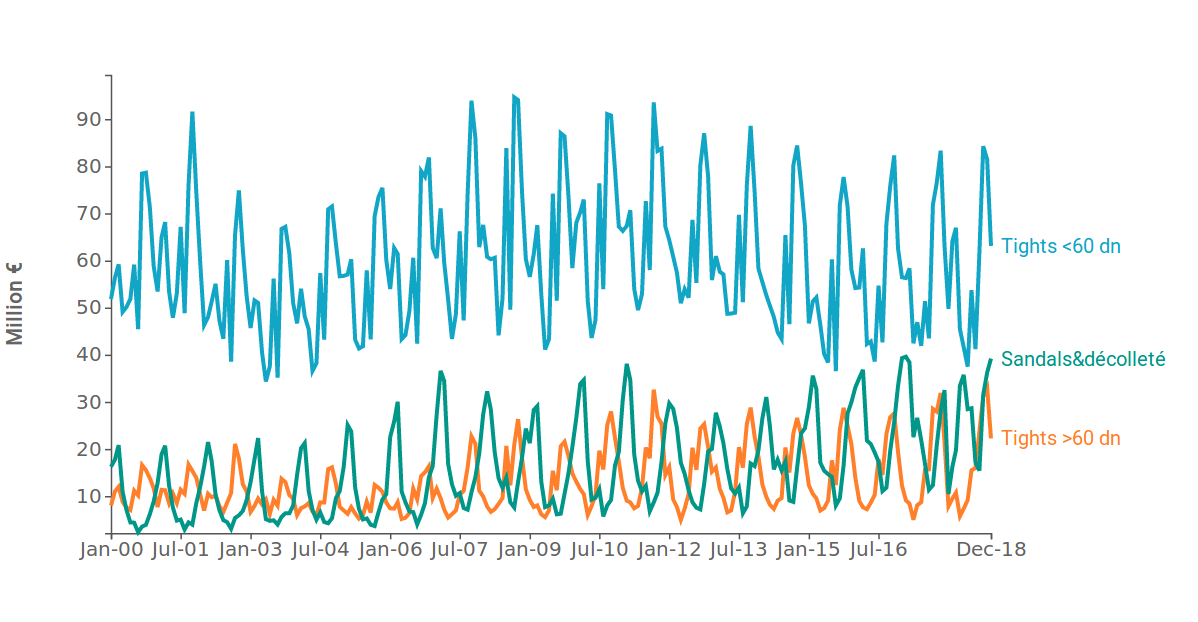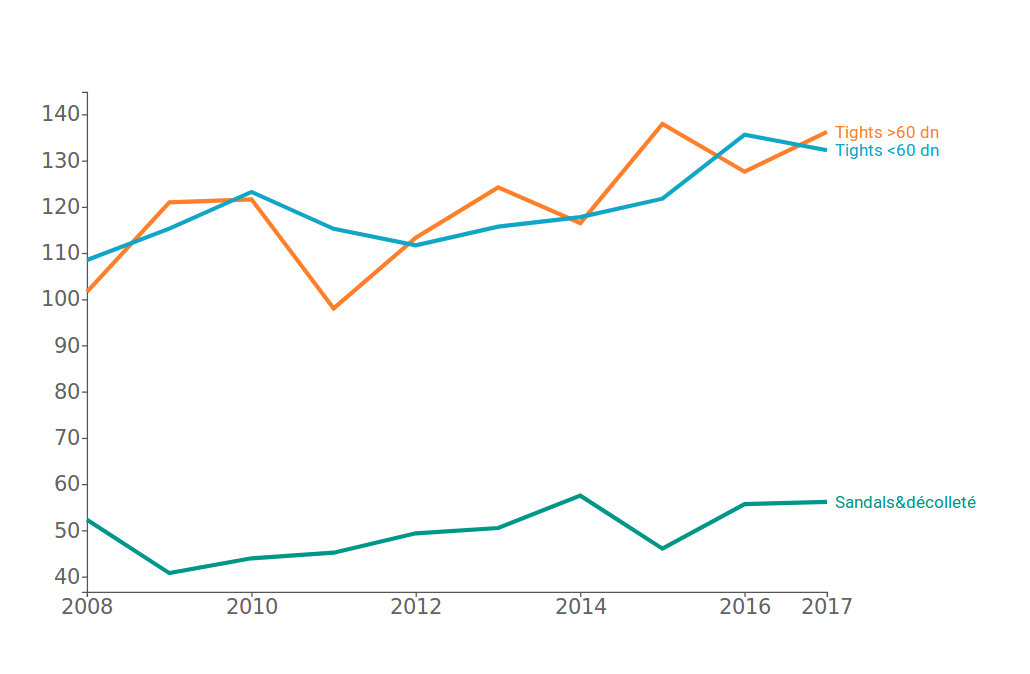Fashion seasons
Fast fashion, a new model of social-driven consumption
Published by Marzia Moccia. .
Fashion Consumption pattern International marketing
Log in to use the pretty print function and embed function.
Aren't you signed up yet?
signup!
The fashion industry is one of the most linked to season changing. Using the international trade data it is easy to show this evidence, taking into consideration three highly seasonal representative products: women's tights in deniers lower than 60, women's tights in deniers greater than 60 and women's high-heel sandals and décolleté.
Graph 1: Stagional product series

Source: ExportPlanning.com
The three series reproduce the cyclical trend of the demand of the three products, identifying similar pattern repeated year-over-year.
Although the fashion industry remains inextricably linked to seasonality, it has profoundly changed over the last few years, in order to respond to an
increasingly dynamic model of clothing consumption.
The growth of a consumption model based on running fashion trends has led to the success of the fast fashion phenomenon.
The expression fast fashion, coined in 1989 by the New York Times, refers to a new business model that allows to introduce new items onto the market
very shortly, thanks to a close integration between the design, production and distribution phases.
This model ensures a drastic reduction of product time to market compared to the traditional business model, responding quickly to emerging market trends.
If, on the one hand, the phenomenon of fast fashion allows to satisfy promptly customers requests, on the other hand the need to respond continuously
to a changing demand has involved significant transformations in the storage timing of big and small fashion system distributors, by amending the traditional
timing scheme of retailers orders.
If previously the distributors anticipated the orders in the preceding period of collection, by anticipating the purchase of the entire collection in one moment, today the fast fashion allows retailers to store smaller quantities of the product, but several times during the same period.
The following chart shows clearly this dynamics for the three products analyzed above, reporting an indicator based on the ratio of the deliveries value of the product made during the sales season and the deliveries value of the product anticipated to the previous season.
Graph 2: Seasonal deliveries indicator

Source: ExportPlanning.com
The deliveries of hosiery products made during the sales season are gradually increased, to the detriment of early off-season deliveries. Same results for the deliveries of high-heel sandals and décolleté. The result is a direct measure of the evolution of the fashion industry towards "real-time" response to consumer purchasing preferences. The most important advantage of this mechanism is to ensure final consumer's demand; in fact, since the production cycles are shorter and respond promptly to current trends, fast fashion retailaers continually attract customers.
The role of social network and influencers
Behind the continuous research of the latest fashion trends there is digital transformation, given the growing importance of social networks and e-commerce.
The greater amount of information available have transformed the customer from a passive user to a real "fashion maker". In fact, especially for youngs,
the social becomes a real showcase, in order to capture the "fashion trends".
The expression of the marriage between fast fashion and social network is represented by influencers, whose choices in the matter of fashion
influence a large part of customer demand.
Trasformation of the competitive advantage
However, the phenomenon of fast fashion raises serious questions about the long-term sustainability of this type of supply chain.
The business model of fast fashion hides significant costs in terms of environmental and social impact.
In fact, fast fashion phenomenon has worsened the competitive conditions of the traditional fashion system, by promoting
trends, not quality of the product.
Short-term aesthetic factors might prevail over the environmental and specific costs of the production model.


